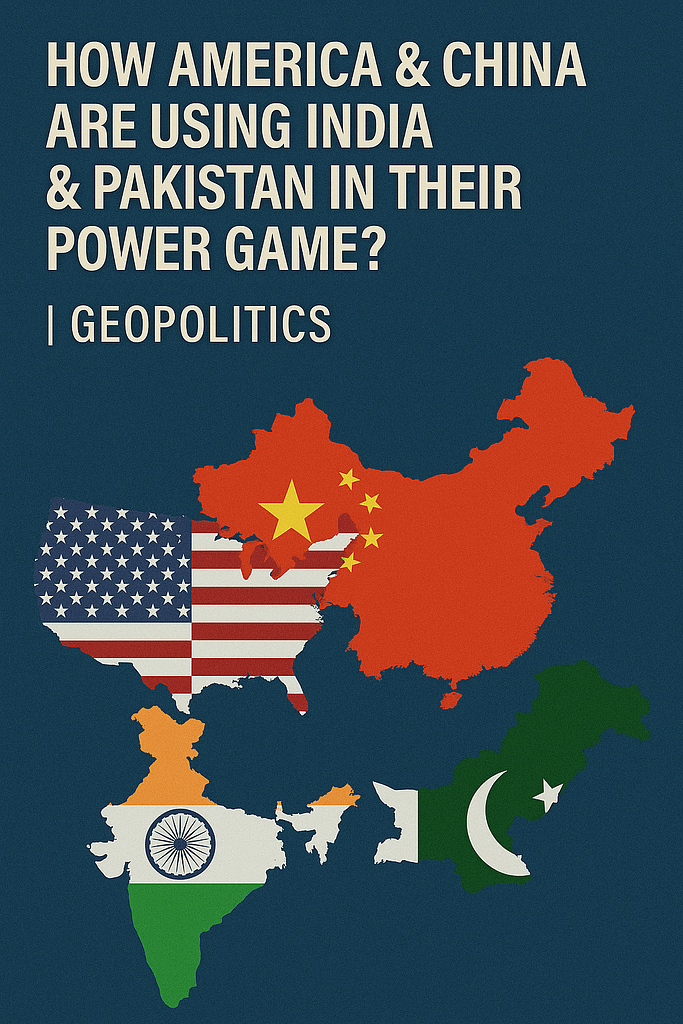
Published on: May 6, 2025 | By Bharat Global Time
The India–Pakistan rivalry has long been a flashpoint in South Asia. But in recent years, it’s not just about historical tensions or territorial disputes anymore — it’s about how global superpowers like the United States and China are playing chess with New Delhi and Islamabad as their strategic pieces.
Welcome to the new Great Game — where geopolitics meets power projection, and India and Pakistan are caught in the middle.
🇺🇸 America’s India Tilt: Strategic Partnership with a Purpose
Since the early 2000s, Washington has gradually shifted away from its Cold War-era alignment with Pakistan to a deeper, defense-heavy partnership with India. The U.S. sees India as a counterweight to China — both economically and militarily.
- QUAD Alliance (with Australia, Japan, U.S., and India): A direct move to contain Chinese influence in the Indo-Pacific.
- Defence Agreements like COMCASA & BECA: Sharing real-time satellite data and military logistics.
- Weapons and Tech Transfers: From F/A-18 fighter talks to joint production of drones.
“India is not just a partner, it’s a pivot,” said a former Pentagon official. “Washington needs India to balance Beijing.”
But make no mistake — America wants leverage, not just friendship. It often nudges India on human rights, Kashmir policy, and trade disputes when convenient. Support is strategic, not sentimental.
🇨🇳 China’s Pakistan Card: Iron Brother or Controlled Client?
On the other side, China has doubled down on Pakistan as its all-weather ally — or perhaps more accurately, a strategic buffer and a gateway to the Arabian Sea.
- China-Pakistan Economic Corridor (CPEC): Beijing’s multi-billion-dollar investment in infrastructure isn’t charity — it’s about access to Gwadar Port and bypassing the Malacca Strait.
- Defense Deals & Joint Exercises: From fighter jets to submarines, China is arming Pakistan to the teeth.
- Political Shielding at the UN: China repeatedly blocks Indian efforts to blacklist Pakistan-based terrorists at the UNSC.
“Pakistan is China’s pliable partner,” says a Chinese analyst. “But it’s also Beijing’s insurance policy against India.”
China doesn’t want a strong, stable Pakistan — it wants a dependent and disruptive one, useful for keeping India bogged down regionally.
The Dangerous Balance: A Tug of War Over South Asia
While the U.S. courts India and China props up Pakistan, the net effect is this:
Both India and Pakistan are being pulled into global rivalries that go far beyond their own borders.
- India risks being drawn into U.S.-China tensions — especially in Taiwan or the South China Sea.
- Pakistan risks being reduced to a Chinese satellite state, losing sovereignty in exchange for aid and survival.
Meanwhile, both powers encourage militarization, fund narratives, and fuel tension — all under the guise of partnerships.
🇮🇳 What Should India Do?
India must play smart, not subservient. Strategic autonomy should remain its mantra — align where interests match, but avoid becoming anyone’s pawn.
“Trust but verify. Partner but preserve independence,” warns a former Indian diplomat. “The superpowers are playing chess — let’s not become the board.”
Conclusion: Whose Game Is It Anyway?
In the grand geopolitics of the 21st century, India and Pakistan are not just neighbors — they’re platforms.
For the U.S. and China, South Asia is less about peace and more about positioning.
The real question isn’t what America or China wants. It’s whether India and Pakistan will continue to let themselves be used — or rise above the script written for them.
Follow Bharat Global Time for more deep-dive geopolitical explainers and real-time international updates.





